
Although most people think about art as pictures or sculptures that look like something or communicate a particular meaning, there can be a lot of benefit to process art. Art therapists will often remind clients that it’s the process that’s important, not the final product. Process art means that the focus of the art is on the experience of making the art, not the resulting art piece, and may even be thrown away afterwards.
As the mother of a toddler, I’ve been immersed in the world of process art recently. Young children naturally approach art with a process orientation. They enjoy the process of creation, the energy and movement of their bodies, and the sensations of the materials. Although they may be proud to see a picture later hung on the fridge, they are often equally happy to just leave it behind when they are done.
- Creating art in sand
- Action art created with my son
In his stages or artistic development, Viktor Lowenfeld described children before the age of 4 as being in the “Scribble” stage. Through this period, children develop control of their bodies and more awareness of the effect of their actions, transitioning from random to intentional mark making. Throughout this stage of development, children enjoy and benefit from the action and the sensations of art-making (the process), not worrying much about what it looks like. Art in this age range seldom “means” anything to the child, but it can still be enjoyable, interesting, and even expressive.
The Expressive Therapies Continuum describes this stage and type of art as the Kinesthetic-Sensory level. Young children naturally work on this level as they experience the world through movement and sensation. The Expressive Therapies Continuum also makes the point that the more complex levels of processing, the Perceptual-Affective and the Cognitive-Symbolic, are not inherently better than the most basic level of Kinesthetic-Sensory processing. A balanced, well-functioning individual is able to take in and process information on all levels.
- String painting
- Feather painting
However, most of us lose sight of the benefits of process art as we grow older. We start to think of art in terms of “good” or “bad,” worrying about how the final product looks. We focus on art as needing to look a certain way or as needing to convey some meaning. The focus on product can lead to a judgmental attitude toward our own art, disconnections from the rhythms and sensations of our own bodies, and a lack of creativity.
With that in mind, I encourage you to try out some different process art activities. If you make art with young children in any capacity – therapist, parent, or teacher – be sure to encourage lots of process art. Don’t be overly focused on teaching kids to do crafts, make art that has a predetermined result, or draw pictures that look like something. If you are looking for ideas to enrich your own art-making or to help teens and adults in art therapy, consider exploring more process art. Process art or art that emphasizes the kinesthetic-sensory level of the brain can be especially helpful for getting clients into the present moment, back in touch with their body, and away from perfectionism.

Action art created by rolling balls through paint
I personally really enjoy and benefit from my forays into process art. I normally spend a lot of my time up in my head, planning things, and worrying about results. And in my natural approach to art, I tend to worry about the outcomes, trying to make art that looks like something or conveys some meaning. Process art helps me to balance out that tendency, get in touch with a more intuitive way of creating, and bring more fun and life into my art. Process art helps me to practice mindfulness in my art, becoming immersed in the experience and letting go of judgment and expectations.
Benefits of process art
- Activating or discharging energy through movement
- Relaxation and self-soothing through engagement of the senses
- Being more in touch with your body through a focus on the senses and motion
- Mindful awareness as you focus on the present moment and the process
- Practicing non-judgmental acceptance of the art
- Stepping away from perfectionism or overthinking
- Opening yourself to new experiences and unexpected outcomes
- Brain integration and healing
- Learning new techniques that can bring richness to all your art
- Allowing emotion to naturally arise and be expressed
- Getting back in touch with art as fun
15 Ideas for process art

Drawing in sand
- Paint with a string dipped in paint or ink
- Stamps, dot markers, and found object stamping
- Paint with water on concrete or chalk board
- Finger paints – try different textured papers or foil
- Action art – rolling marbles, rocks, balls, and trucks through paint (use a tray to contain the objects, try a baby pool for a group)
- Play with sensory dough – add different colors, scents, and textures to homemade playdough
- Tactile collages – fabrics, textured paper, pom-poms, etc.
- Squishing paint (or colored shaving cream) in Ziploc bags
- Squeeze bottle painting or homemade puff paint
- Scribble back and forth on the paper
- Drawing with fingers in salt, sand, sugar, etc. on a colored surface/tray
- Dropper painting – use pipettes/eye droppers and liquid watercolors
- Throwing sponges or crumpled paper with paint at a wall
- Waterfall/drip painting –use droppers or squeeze bottle at the top of paper
- Paint with feathers, leaves, sticks, crumpled paper, or other materials
For even more ideas, click here to download my handout: Process Art Ideas For Kinesthetic & Sensory Experiences.
What are your favorite process art activities? How do you use kinesthetic and sensory approaches in your art or with your clients? I’d love to hear your thoughts in the comments!

For more ideas and tips about art in therapy, be sure to sign up for the newsletter: http://eepurl.com/bOu5yj
Carolyn Mehlomakulu, LMFT-S, ATR is an art therapist in Austin, Texas who works with children, teens, and families. For more information about individual therapy, teen and child counseling, family therapy, teen group therapy, and art therapy services, please visit: www.therapywithcarolyn.com.
This blog is not intended to diagnose or treat any mental health conditions. All directives, interventions, and ideas should be used by qualified individuals within the appropriate bounds of their education, training, and scope of practice. Information presented in this blog does not replace professional training in child and family therapy, art therapy, or play therapy. Art therapy requires a trained art therapist.
This blog includes affiliate links (see full disclosure here). If you’d like to help support the blog without any extra cost to you, please click through on links and shop as you normally would. Your support is greatly appreciated!
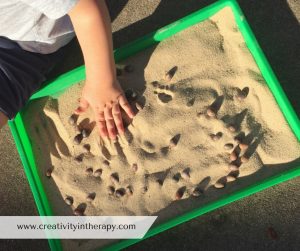



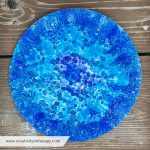
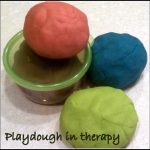
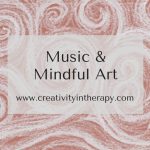
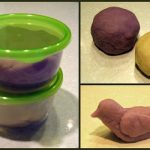

I absolutely love your site! I’m an artist-painter and really enjoy making process art. It’s kind of a more recent discovery to me and I find it to be very therapeutic and even insightful when seeing the finished piece. It’s amazing what comes out of you while intuitively working!
Furthermore, thanks for the important work that you do. It must be extremely rewarding. If you don’t mind, I may even source some of your writing and include your terminology on my website that’ll soon be launched. I’ll use appropriate sourcing/citation rules… don’t worry:)
Take care…. ️
Sincerely,
Mary Ann Cangialosi
Hi Mary Ann, thanks for your kind words. Good luck on the launch of your own website and feel free to quote from my blog with a link back to the source. 🙂